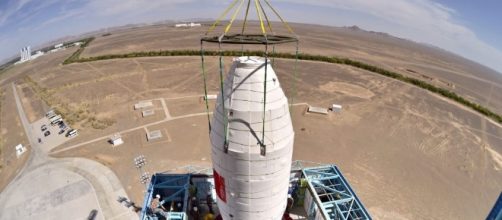On Thursday morning, China successfully launched its first X-ray space telescope with the help of a Long March-4B rocket from the Jiuquan Satellite Launch Center at 11 a.m. (3:00 GMT). The Hard X-ray Modulation Telescope (HXMT) named ‘Insight’ weighs 2.5 tons and was initially set for release in March. This new orbital telescope has been specially designed to observe and study black holes, neutron stars and other energetic phenomena in space. The telescope was initially proposed by scientists Li Tibei and Wu Mei of the Institute of High Energy Physics of the Chinese Academy of Sciences (IHEP) based on their innovative direct demodulation image reconstruction method.
What is the satellite capable of doing?
The HXMT is supposed to observe some of the most energetic processes in the universe. The X-rays produced by these highly energetic phenomena cannot penetrate the Earth’s atmosphere and hence they need to be observed by instruments mounted on artificial satellites. According to its designers, the HXMT is carrying three collimated X-ray telescopes – the high-energy X-ray telescope, the medium energy X-ray telescope and the low energy X-ray telescope which observe energies ranging from 20 to 200 KeV. It also contains an instrument to study the space environment. Compared to earlier astronomical satellites, the HXMT has a relatively larger detection area, wider energy range and wider field of view.
These properties give the satellite additional advantages to detect and observe magnetic fields, X-ray emitting neutron stars and to understand the evolution of Black Holes. The satellite will orbit 550 km's above Earth and will perform scan the surrounding space thus possibly discovering a large number of new transient X-ray sources. Over it’s expected an operating lifetime of 4 years, the HXMT will conduct focused observations of black holes, pulsar interiors, neutron stars and several other space-related phenomena. It will also help Chinese scientists study gamma-ray outbursts corresponding to gravitational waves and find out how pulsars can effectively be used for spacecraft navigation.
The development of Chinese space program
China has been working towards the establishment of a space program by 2022 which can give competition to US or Russia. China has put a huge amount of resources for developing its ambitious space program. In April, China's first cargo spacecraft, Tianzhou-1 was successfully launched to support it’s emerging space lab. Last month, China opened a “Lunar Palace” facility simulating a moon-like environment to prepare student volunteers to prepare themselves for an actual lunar mission. The X-ray telescope is another important addition to the Chinese space program.


